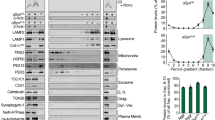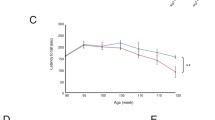Abstract
Physiological functions of α-synuclein, a protein implicated in certain types of neurodegeneration, and two other members of the same family, β-synuclein and γ-synuclein, are not clearly understood. It has been suggested that synucleins are involved in intracellular processes associated with survival of neurons and their response to stress, and that changes of synuclein ratio might have deteriorating effects on neurons. In wild-type mice, sensory neurons of the peripheral nervous system express α-synuclein and notably high levels of γ-synuclein, but targeted inactivation of either of these genes has no effect on these neurons. Here we produced double, α-synuclein/γ-synuclein null mutant mice, which develop normally, are fertile, and show no obvious signs of pathology in adulthood. Survival of α/γ-synuclein-deficient peripheral sensory neurons in vivo and in primary tissue culture is indistinguishable from survival of wild-type neurons. The absence of two synucleins does not lead to expression in sensory neurons of the third member of the family, β-synuclein. Therefore, our results demonstrate that neurons with normally high levels of synuclein(s) can develop and survive normally in the absence of any of these proteins. This suggests that other intraneuronal mechanisms and pathways effectively compensate the loss of synuclein function in null mutant animals.
Similar content being viewed by others
References
Abeliovich A., Schmitz Y., Farinas I., Choi-Lundberg D., Ho W. H., Castillo P. E., et al. (2000) Mice lacking alpha-synuclein display functional deficits in the nigrostriatal dopamine system. Neuron 25, 239–252.
Buchman V. L., Hunter H. J., Pinon L. G., Thompson J., Privalova E. M., Ninkina N. N., and Davies A. M. (1998) Persyn, a member of the synuclein family, has a distinct pattern of expression in the developing nervous system. J. Neurosci. 18, 9335–9341.
Cabin D. E., Shimazu K., Murphy D., Cole N. B., Gottschalk W., McIlwain K. L., et al. (2002) Synaptic vesicle depletion correlates with attenuated synaptic responses to prolonged repetitive stimulation in mice lacking alpha-synuclein. J. Neurosci. 22, 8797–8807.
Cookson M. R. (2003) Pathways to parkinsonism. Neuron 37, 7–10.
da Costa C. A., Masliah E., and Checler F. (2003) Beta-synuclein displays an antiapoptotic p53-dependent phenotype and protects neurons from 6-hydroxy-dopamine-induced caspase 3 activation: Cross-talk with alpha-synuclein and implication for Parkinson’s disease. J. Biol. Chem. 278, 37,330–37,335.
Dev K. K., Hofele K., Barbieri S., Buchman V. L., and van der Putten H. (2003) Part II: alpha-synuclein and its molecular pathophysiological role in neurodegenerative disease. Neuropharmacology 45, 14–44.
Dickson D. W. (2001) Alpha-synuclein and the Lewy body disorders. Curr. Opin. Neurol. 14, 423–432.
Ding T. T., Lee S. J., Rochet J. C., and Lansbury P. T. Jr. (2002) Annular alpha-synuclein protofibrils are produced when spherical protofibrils are incubated in solution or bound to brain-derived membranes. Biochemistry 41, 10,209–10,217.
Duda J. E., Shah U., Arnold S. E., Lee V. M., and Trojanowski J. Q. (1999) The expression of alpha-, beta-, and gamma-synucleins in olfactory mucosa from patients with and without neurodegenerative diseases. Exp. Neurol. 160, 515–522.
Galvin J. E., Giasson B., Hurtig H. I., Lee V. M., and Trojanowski J. Q. (2000) Neurodegeneration with brain iron accumulation, type 1 is characterized by alpha-, beta-, and gamma-synuclein neuropathology. Am. J. Pathol. 157, 361–368.
Galvin J. E., Lee V. M., and Trojanowski J. Q. (2001) Synucleinopathies: clinical and pathological implications. Arch. Neurol. 58, 186–190.
Galvin J. E., Uryu K., Lee V. M., and Trojanowski J. Q. (1999) Axon pathology in Parkinson’s disease and lewy body dementia hippocampus contains alpha-, beta-, and gamma-synuclein. Proc. Natl. Acad. Sci. U. S. A. 96, 13450–13455.
Giasson B. I., Duda J. E., Forman M. S., Lee V. M., and Trojanowski J. Q. (2001) Prominent perikaryal expression of alpha- and beta-synuclein in neurons of dorsal root ganglion and in medullary neurons. Exp. Neurol. 172, 354–362.
Goedert M. (2001) Parkinson’s disease and other alpha-synucleinopathies. Clin. Chem. Lab. Med. 39, 308–312.
Gosavi N., Lee H. J., Lee J. S., Patel S., and Lee S. J. (2002) Golgi fragmentation occurs in the cells with prefibrillar alpha-synuclein aggregates and precedes the formation of fibrillar inclusion. J. Biol. Chem. 277, 48,984–48,992.
Hashimoto M., Rockenstein E., Mante M., Mallory M., and Masliah E. (2001) Beta-synuclein inhibits alpha-synuclein aggregation: A possible role as an anti-parkinsonian factor. Neuron 32, 213–223.
Hsu L. J., Sagara Y., Arroyo A., Rockenstein E., Sisk A., Mallory M., et al. (2000) Alpha-synuclein promotes mitochondrial deficit and oxidative stress. Am. J. Pathol. 157, 401–410.
Jakes R., Spillantini M. G., and Goedert M. (1994) Identification of two distinct synucleins from human brain. FEBS Lett. 345, 27–32.
Jakowec M. W., Donaldson D. M., Barba J., and Petzinger G. M. (2001) Postnatal expression of alpha-synuclein protein in the rodent substantia nigra and striatum. Dev. Neurosci. 23, 91–99.
Ji H., Liu Y. E., Jia T., Wang M., Liu J., Xiao G., et al. (1997) Identification of a breast cancer-specific gene, BCSG1, by direct differential cDNA sequencing. Cancer Res. 57, 759–764.
Kruger R., Eberhardt O., Riess O., and Schulz J. B. (2002) Parkinson’s disease: One biochemical pathway to fit all genes? Trends Mol. Med. 8, 236–240.
Kruger R., Kuhn W., Muller T., Woitalla D., Graeber M., Kosel S., et al. (1998) Ala30pro mutation in the gene encoding alpha-synuclein in Parkinson’s disease. Nat. Genet. 18, 106–108.
Lashuel H. A., Petre B. M., Wall J., Simon M., Nowak R. J., Walz T., and Lansbury P. T. Jr. (2002) Alpha-synuclein, especially the Parkinson’s disease-associated mutants, forms pore-like annular and tubular protofibrils. J. Mol. Biol. 322, 1089–1102.
Lavedan C., Leroy E., Dehejia A., Buchholtz S., Dutra A., Nussbaum R. L., and Polymeropoulos M. H. (1998) Identification, localization and characterization of the human gamma-synuclein gene. Hum. Genet. 103, 106–112.
Lee M., Hyun D., Halliwell B., and Jenner P. (2001) Effect of the overexpression of wild-type or mutant alpha-synuclein on cell susceptibility to insult. J. Neurochem. 76, 998–1009.
Lee S. J. (2003) Alpha-synuclein aggregation: a link between mitochondrial defects and Parkinson’s disease? Antioxid. Redox Signal 5, 337–348.
Lehmensiek V., Tan E. M., Schwarz J., and Storch A. (2002) Expression of mutant alpha-synucleins enhances dopamine transporter-mediated MPP+ toxicity in vitro. Neuroreport 13, 1279–1283.
Li J. Y., Henning Jensen P., and Dahlstrom A. (2002) Differential localization of alpha-, beta- and gamma-synucleins in the rat CNS. Neuroscience 113, 463–478.
Lotharius J. and Brundin P. (2002) Pathogenesis of Parkinson’s disease: dopamine, vesicles and alpha-synuclein. Nat. Rev. Neurosci. 3, 932–942.
Mori F., Hayashi S., Yamagishi S., Yoshimoto M., Yagihashi S., Takahashi H., and Wakabayashi K. (2002) Pick’s disease: alpha- and beta-synuclein-immunoreactive pick bodies in the dentate gyrus. Acta Neuropathol. (Berl.) 104, 455–461.
Nakajo S., Tsukada K., Omata K., Nakamura Y., and Nakaya K. (1993) A new brain-specific 14-kDa protein is a phosphoprotein. Its complete amino acid sequence and evidence for phosphorylation. Eur. J. Biochem. 217, 1057–1063.
Ninkina N., Papachroni K., Robertson D. C., Schmidt O., Delaney L., O’Neill F., et al. (2003) Neurons expressing the highest levels of gamma-synuclein are unaffected by targeted inactivation of the gene. Mol. Cell. Biol. 23, 8233–8245.
Ninkina N. N., Privalova E. M., Pinon L. G., Davies A. M., and Buchman V. L. (1999) Developmentally regulated expression of persyn, a member of the synuclein family, in skin. Exp. Cell Res. 246, 308–311.
Ostrerova N., Petrucelli L., Farrer M., Mehta N., Choi P., Hardy J., and Wolozin B. (1999) Alpha-synuclein shares physical and functional homology with 14-3-3 proteins. J. Neurosci. 19, 5782–5791.
Park J. Y. and Lansbury P. T. Jr. (2003) Beta-synuclein inhibits formation of alpha-synuclein protofibrils: a possible therapeutic strategy against Parkinson’s disease. Biochemistry 42, 3696–3700.
Petrucelli L., O’Farrell C., Lockhart P. J., Baptista M., Kehoe K., Vink L., et al. (2002) Parkin protects against the toxicity associated with mutant alpha-synuclein: proteasome dysfunction selectively affects catecholaminergic neurons. Neuron 36, 1007–1019.
Pinon L. G., Middleton G., and Davies A. M. (1997) Bcl-2 is required for cranial sensory neuron survival at defined stages of embryonic development. Development 124, 4173–4178.
Polymeropoulos M. H., Lavedan C., Leroy E., Ide S. E., Dehejia A., Dutra A., et al. (1997) Mutation in the alpha-synuclein gene identified in families with Parkinson’s disease. Science 276, 2045–2047.
Rockenstein E., Hansen L. A., Mallory M., Trojanowski J. Q., Galasko D., and Masliah E. (2001) Altered expression of the synuclein family mRNA in Lewy body and Alzheimer’s disease. Brain Res. 914, 48–56.
Saha A. R., Ninkina N. N., Hanger D. P., Anderton B. H., Davies A. M., and Buchman V. L. (2000) Induction of neuronal death by alpha-synuclein. Eur. J. Neurosci. 12, 3073–3077.
Surgucheva I., McMahan B., Ahmed F., Tomarev S., Wax M. B., and Surguchov A. (2002) Synucleins in glaucoma: Implication of gamma-synuclein in glaucomatous alterations in the optic nerve. J. Neurosci. Res. 68, 97–106.
Surguchov A., McMahan B., Masliah E., and Surgucheva I. (2001) Synucleins in ocular tissues. J. Neurosci. Res. 65, 68–77.
Tiunova A. A., Anokhin K. V., Saha A. R., Schmidt O., Hanger D. P., Anderton B. H., et al. (2000) Chicken synucleins: cloning and expression in the developing embryo. Mech. Dev. 99, 195–198.
Trojanowski J. Q. and Lee V. M. (2002) Parkinson’s disease and related synucleinopathies are a new class of nervous system amyloidoses. Neurotoxicology 23, 457–460.
Uversky V. N., Li J., Souillac P., Millett I. S., Doniach S., Jakes R., et al. (2002) Biophysical properties of the synucleins and their propensities to fibrillate: inhibition of alpha-synuclein assembly by beta- and gamma-synucleins. J. Biol. Chem. 277, 11,970–11,978.
Volles M. J. and Lansbury P. T. Jr. (2002) Vesicle permeabilization by protofibrillar alpha-synuclein is sensitive to Parkinson’s disease-linked mutations and occurs by a pore-like mechanism. Biochemistry 41, 4595–4602.
Volles M. J. and Lansbury P. T. Jr. (2003) Zeroing in on the pathogenic form of alpha-synuclein and its mechanism of neurotoxicity in Parkinson’s disease. Biochemistry 42, 7871–7878.
Volles M. J., Lee S. J., Rochet J. C., Shtilerman M. D., Ding T. T., Kessler J. C., and Lansbury P. T. Jr. (2001) Vesicle permeabilization by protofibrillar alpha-synuclein: implications for the pathogenesis and treatment of Parkinson’s disease. Biochemistry 40, 7812–7819.
Welch K. and Yuan J. (2003) Alpha-synuclein oligomerization: a role for lipids? Trends Neurosci. 26, 517–519.
Windisch M., Hutter-Paier B., Rockenstein E., Hashimoto M., Mallory M., and Masliah E. (2002) Development of a new treatment for Alzheimer’s disease and Parkinson’s disease using anti-aggregatory beta-synuclein-derived peptides. J. Mol. Neurosci. 19, 63–69.
Wood S. J., Wypych J., Steavenson S., Louis J. C., Citron M., and Biere A. L. (1999) Alpha-synuclein fibrillogenesis is nucleation-dependent. Implications for the pathogenesis of Parkinson’s disease. J. Biol. Chem. 274, 19,509–19,512.
Zhu M., Li J., and Fink A. L. (2003) The association of alpha-synuclein with membranes affects bilayer structure, stability and fibril formation. J. Biol. Chem. 278, 40,186–40,197.
Author information
Authors and Affiliations
Corresponding author
Rights and permissions
About this article
Cite this article
Papachroni, K., Ninkina, N., Wanless, J. et al. Peripheral sensory neurons survive in the absence of α- and γ-synucleins. J Mol Neurosci 25, 157–164 (2005). https://doi.org/10.1385/JMN:25:2:157
Received:
Accepted:
Issue Date:
DOI: https://doi.org/10.1385/JMN:25:2:157




